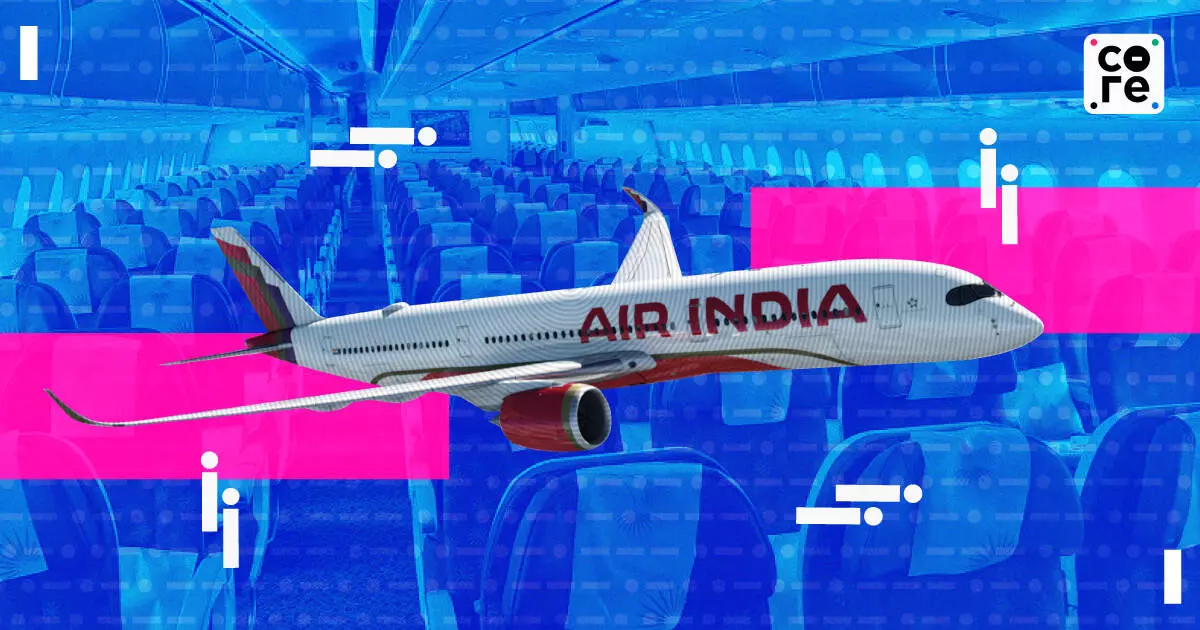
A Minister’s Bad Flight Sparks a Bigger Question
Air India is clearly playing on the margins, as numerous publicly posted complaints from upset passengers indicate.

Union Agriculture Minister and former Madhya Pradesh Chief Minister Shivraj Singh Chouhan travelled economy last week on an Air India flight that, by his own account, did not go too well.
His seat was apparently broken on the Bhopal-Delhi flight. While he said he did not care about sitting discomfort, he criticised the airline for charging passengers full fare for defective and uncomfortable seats, calling it unethical. "Isn’t this cheating passengers?" he asked.
Chouhan also expressed disappointment that, despite Air India’s takeover by the Tata Group, service levels had not improved as he had expected.
He added that when he asked airline staff about his seat, they told him that the management was aware of its condition and that the ticket for that seat was not supposed to be sold.
It is, of course, interesting that the aircraft in question, a fairly new, two-year-old Airbus A321, had seats that were in poor shape.
The issue, then, is not just whether the minister’s seat was broken, but that the airline knowingly sold a full-fare ticket for a defective seat—at least, that appears to be Chouhan’s argument.
This is, of course, not a new problem for Air India and reflects a larger issue that many companies face: the trade-off between repairing or upgrading products at a time of strong demand.
High Demand, Low Service—Aviation’s Trade-Off
Because aviation is a cyclical industry, airlines naturally try to maximise revenue before the tide turns again.
Air India could perhaps be given the benefit of the doubt, but that is increasingly difficult. Complaints about seat quality and in-flight entertainment on Air India’s international routes—especially the lucrative New York sector—are well known.
I can personally vouch for at least one such experience, having endured barely functioning seats and an in-flight entertainment system with almost no content—let alone any actual entertainment—on a 14-hour flight from New York to Delhi. This was post-privatisation, incidentally.
Last year, India’s domestic airlines carried 161 million passengers, up 6.1% from 152 million the previous year, according to figures from the Directorate General of Civil Aviation (DGCA) cited in media reports.
Air India holds roughly 26% of the market, significantly behind IndiGo’s 65%.
A more useful figure to look at is the passenger load factor (occupancy rate). In December 2024, Air India's load factor stood at nearly 85%, compared to IndiGo’s 91%. Generally, anything above 80% is considered strong for airlines.
At present, global aviation demand is soaring, particularly in Asia and the Middle East, where load factors are consistently high.
These are averages obviously, which means there are sectors where flights are constantly going full as may have been the case on the Bhopal - Delhi flight the minister referred to.
And when load factors are high and passengers are willing to pay more, relatively at least, then the airline is evidently tempted to take the money and deal with the consequences of poor inflight equipment later.
When Bad Seats Become a Business Strategy
After all, an aircraft seat is a perishable commodity—once a plane takes off, so does the revenue that could have been earned.
I asked Sanjay Lazar, a former Air India veteran who last held the position of Team Lead for Customer Relations, about the standard operating procedure (SOP) for faulty seats.
According to him, flight engineers conduct thorough checks of seats and seatbelts before an aircraft’s first flight, particularly on domestic routes, where planes may complete multiple hops in a day.
If a seat malfunction is discovered during a later flight, the crew logs the issue in a Cabin Defect Log Book, recording the seat number and nature of the defect.
In the pre-digital era, these log entries were entirely physical, with multiple copies—including one for the engineer responsible for maintenance. This manual system could mean longer delays in addressing issues.
Now, software solutions ensure that seat usability information is updated in real-time, allowing airlines to either release previously unavailable seats for sale or block defective ones before they are sold—forewarning passengers.
So, it is unlikely that such information is unavailable or not shared with all relevant teams.
Yet, based on my experience and that of many others on Air India’s international routes and apparently domestic as well, the airline has obviously and knowingly sold seats in poor condition.
Whether or not Air India’s information systems on the domestic sector are up to date, it is not the passenger’s fault if the airline is unaware of faulty seats—if indeed, they did not know.
Particularly when high fares have been paid.
Air India’s Customer Gamble: How Much Discomfort Is Too Much?
The dilemma for any business leader or revenue head in this situation is to ensure that passenger trust is not lost—or compromised—during strong demand periods by forcing a bad product on consumers, simply because they have limited choices.
Remember, most people don’t complain—either because they don’t have the time or don’t see the point.
Exactly what the minister pointed out.
Then, there is the question of percentages—how many bad seats can an airline consider an acceptable business risk?
The risk being damage to reputation and the possibility that a passenger won’t return.
Air India is clearly playing on the margins, as numerous publicly posted complaints from upset passengers indicate.
Complaining about poor service is one thing.
Suggesting that Air India’s service was better before privatisation adds insult to injury.
Air India is clearly playing on the margins, as numerous publicly posted complaints from upset passengers indicate.
Air India is clearly playing on the margins, as numerous publicly posted complaints from upset passengers indicate.

